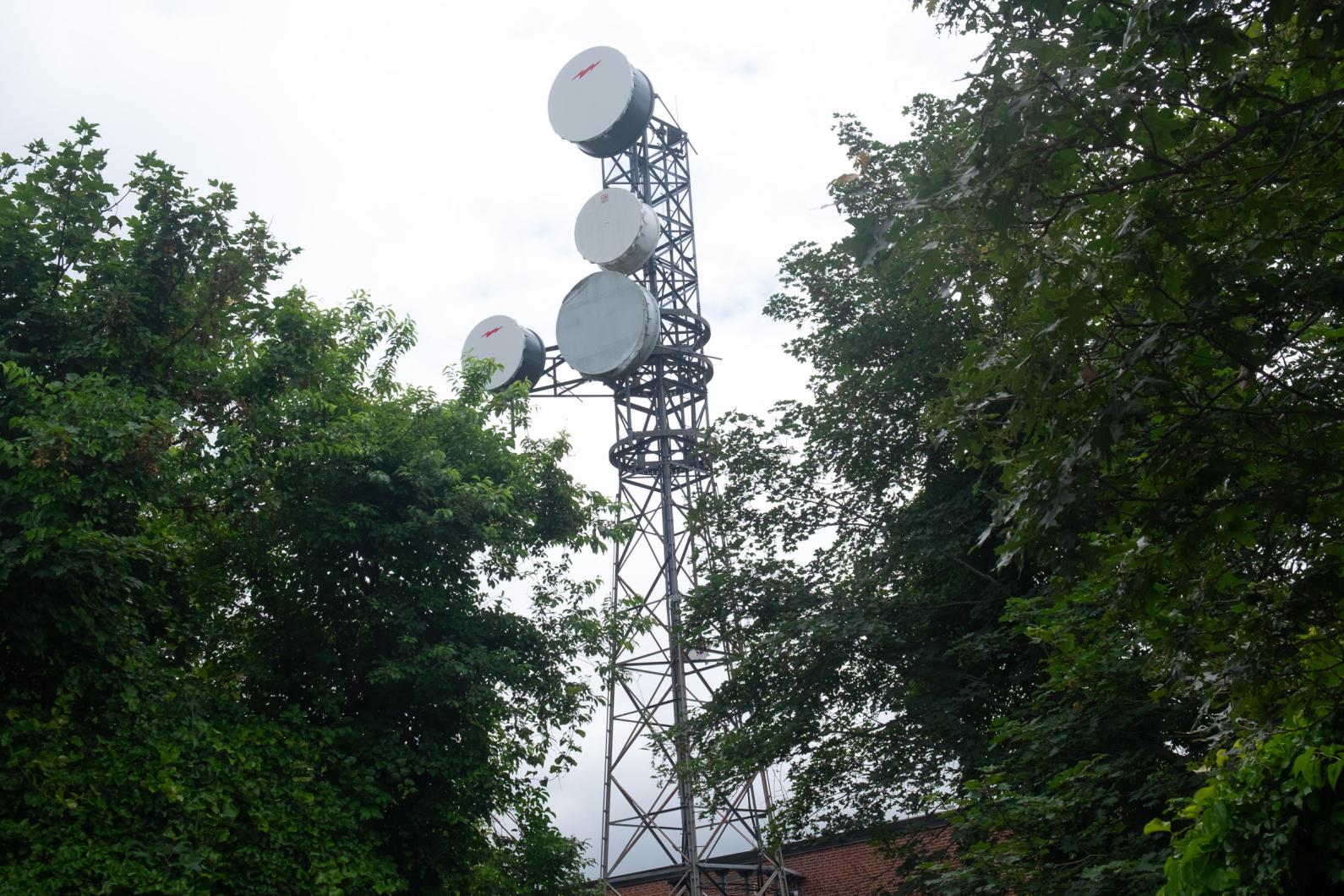Five public hearings and one controversial tree survey later, the Martha’s Vineyard Commission has voted to approve a 53-foot height increase to the Verizon tower in Vineyard Haven.
The permitting process for the project began nearly two years ago, when representatives for Verizon came to the commission to request a height increase to their microwave tower located just off the Edgartown-Vineyard Haven Road in Vineyard Haven. In public testimony, the representatives cited poor reception between the tower on the Vineyard and its sister towers on the Cape and Nantucket because of tree growth on the Island.
Verizon uses the tower for landline calls, internet service and emergency communications, but not for cell service. Throughout the public hearing process, commissioners have pressed Verizon on whether the 53-foot height increase was necessary considering the visual implications of a taller tower. A survey was conducted to determine the type and future growth of the approximately 20 trees interrupting the tower’s microwave signal.
After an arborist from Polly Hill determined it was unlikely any tree would reach 100 feet in height, commissioners agreed that increasing the tower’s height from 77 to 130 feet was appropriate considering the location of the tower’s three dishes. The lowest dish will be reinstalled at 95 feet and the highest at 128, with the 30-foot space between dishes necessary for microwave transmission.
At their meeting Thursday, commissioners credited Verizon for its patience during the nearly two-year review process.
“This goes back a ways,” commissioner and public hearing chairman Richard Toole said. “On the one hand, Verizon presented the additional 53 feet of height on the tower to ensure the additional public safety and access for emergency phone calls. On the other hand, the desire to protect viewsheds on the Island Roads DCPC [district of critical planning concern] and to maintain the Island’s more rural character suggested that the commission examine the possibility of lowering the tower height while still enabling service.”
Although the commission found the tower could have functioned serviceably at 120 feet, commissioners ultimately decided that in the interest of public safety it would be best to allow Verizon to construct the tower at the requested height.
“Really the only benefit, which is a significant benefit, is an emergency and ordinary landline service which will withstand the test of time with otherwise increased deterioration,” commissioner Joan Malkin said. “That is the benefit, and it seems significant.”
Commissioners voted unanimously to approve the project, under the conditions that no logos be attached to the dishes, that it be used exclusively for microwave transmissions, and that Verizon pay to decommission the tower if the technology becomes obsolete.
“We did not take this lightly,” Mr. Toole said.
In other business, the commission turned its eye to the Tisbury historic district again, this time scrutinizing the use of PVC siding on a demolition that was approved two years ago. When the commission approved the project, one of the conditions was that the applicant had to use natural wood rather than PVC on the building’s exterior, including the trim, fascia, soffit and frieze boards.
“Well, guess what, they went ahead and used PVC on all those trim woods,” Mr. Toole told commissioners.
The home dates 1850 and is located on Franklin Street in Vineyard Haven. William Westman is the homeowner.
As recompense for the violation, the commission decided they will allow the applicant to retain the PVC piping already in place, but has asked him to contribute a sum of money equal to the cost of removing the piping and replacing it with wood. The amount of money, estimated to be in the $30,000 to $50,000 range, would go to the creation of a searchable database that inventories all the homes more than 100 years old in the town.
Commissioners said while they decried the use of PVC on the building’s exterior, it would be backwards to force the applicant to remove the plastic now that it was in place.
“A major reason for telling them not to do this, is that the material we told them not to use is difficult to dispose of in a responsible way,” commissioner Linda Sibley said. “So we’re in a bind . . . they trapped us.”
Some commissioners felt the continued presence of the PVC on the building, situated on a visible corner, would signal that the commission had a weak response to the violation.
“My concern is, it sort of says, okay, so we set stipulations down, and you don’t do it — and we don’t do anything about it,” commissioner Kathy Newman said. “I’m concerned about what that says.”
Other commissioners disagreed, saying the monetary price is punitive..
“It is not a deal for them to do this,” commissioner Joan Malkin said. “They would have been much better off using the wood trim in the first place.”
The homeowner, the Tisbury historic commission and MVC have all agreed to the offer, which commissioners accepted with a voice vote.








Comments (2)
Comments
Comment policy »